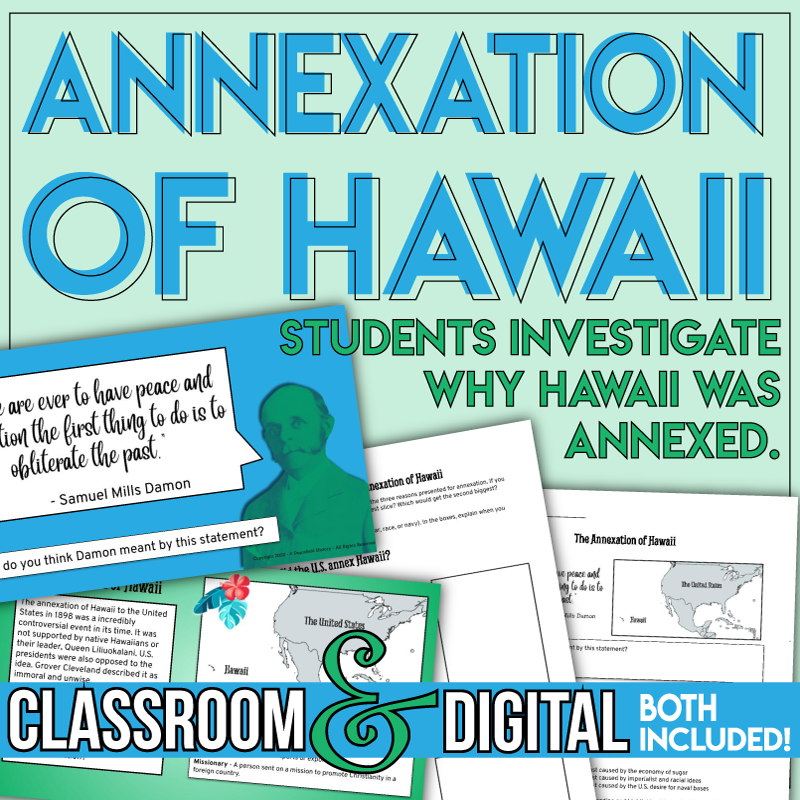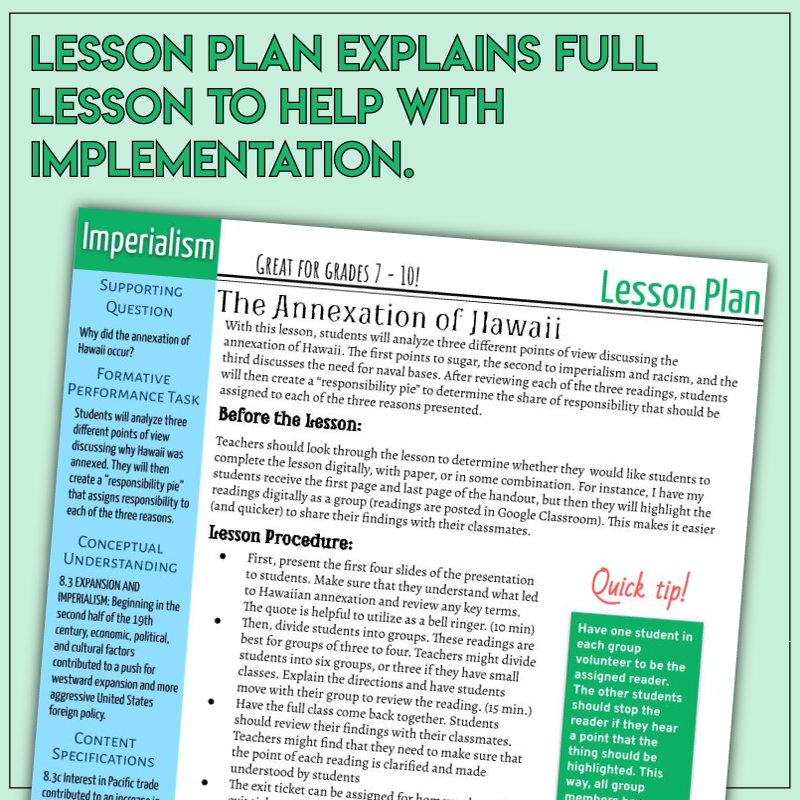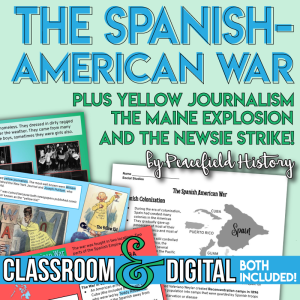Description
With this lesson, students will analyze three different points of view discussing the annexation of Hawaii. The first points to sugar, the second to imperialism and racism, and the third discusses the need for naval bases. After reviewing each of the three readings, students will then create a “responsibility pie” to determine the share of responsibility that should be assigned to each of the three reasons presented.
This lesson discusses the events that led to the annexation of Hawaii, including the overthrow of Queen Liliuokalani, the demands of sugar planters in Hawaii, the influence of president McKinley and the writings of Alfred T. Mahan. All of the text is written at a level that makes it accessible to students at the older end of the middle school level. You can see more in the preview here. – The Annexation of Hawaii
Topics include: Queen Liluokalani, Alfred T. Mahan, Imperialism, annexation, the McKinley tariff, King Kalakaua, sugar planters, naval bases, missionaries
Included in this resource:
- Classroom Presentation – Made to be utilized in an in-class situation with students. A PowerPoint version is included in the file and the Google Slides version is provided with the link. The Google Slides version is easily editable for use with Pear Deck.
- Handout for Students – Printable version that is made to coordinate with the classroom presentation – (PDF, Google Slides link, and PowerPoint)
- Lesson Plan for implementation
This lesson is tied with the following NYS Standards:
8.3c – Interest in Pacific trade contributed to an increase in United States foreign interactions.
8.3c.1 – Students will assess the events surrounding the annexation of Hawaii.
© Copyright 2022 Peacefield History. All rights reserved.
Permission is granted to copy pages specifically designed for student or teacher use by the original purchaser or licensee. This is intended to be used by one teacher unless additional licenses have been purchased. The reproduction of any other part of this product is strictly prohibited. Copying any part of this product and placing it on the Internet in any form besides Google Classroom is strictly forbidden. Doing so makes it possible for an Internet search to make the document available on the Internet, free of charge, and is a violation of the Digital Millennium Copyright Act (DMCA).




 Google Apps™, Internet Activities
Google Apps™, Internet Activities





Reviews
There are no reviews yet.